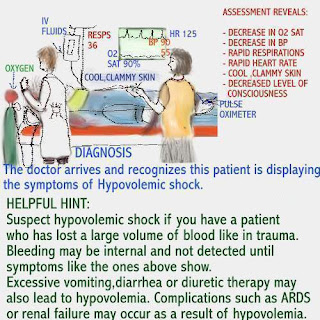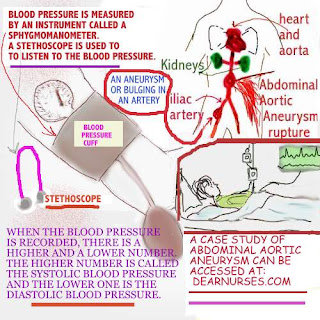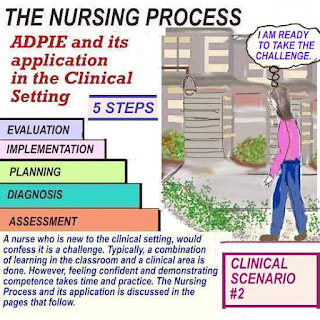RECOGNIZING HYPOVOLEMIC SHOCK
The clinical scenario above shows a patient who
has arrived in the ER following a traumatic event.
The doctor arrives and recognizes the patient is in
hypovolemic shock.
When an assessment is done, suspect hypovolemic
shock if there has been a large volume of blood loss
following trauma.
Warning signs
- decrease in oxygen saturation, blood pressure or
level of consciousness
- rapid respirations or heart rate
- cool, clammy skin
Complications such as ARDS or renal failure may
occur as a result of hypovolemia.
Learn more about this topic, by clicking on the links:
AAA
Blood pressure





Comments
Post a Comment